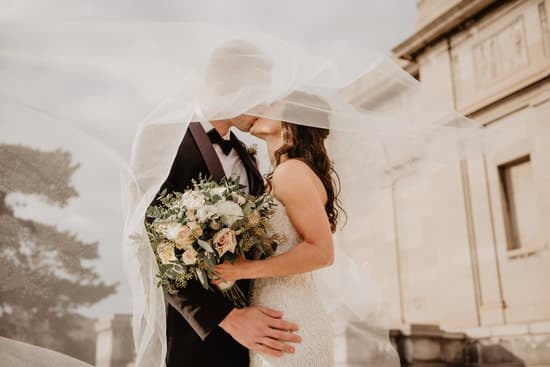Planning a wedding can be an exciting but overwhelming experience. From choosing the perfect venue to crafting personalized vows, there are many details to consider when preparing for the big day. One of the most important aspects of any wedding is the ceremony itself, where couples exchange vows and commit to a lifetime together. In this article, we will explore how the wedding ceremony typically unfolds, from the processional to the recessional, and everything in between.
As couples begin their journey towards marriage, they must carefully plan and prepare for their wedding ceremony. This involves making important decisions such as choosing the venue, selecting decorations, and arranging seating for their guests. Each aspect of the ceremony plays a significant role in setting the stage for this momentous occasion, creating an atmosphere that reflects the couple’s love and commitment to each other.
One of the most memorable parts of any wedding is undoubtedly the exchange of vows. This is a deeply meaningful moment where couples express their love and dedication to each other in front of their family and friends.
The significance of this part of the ceremony cannot be overstated, as it symbolizes the promises that will guide the couple’s future together. But before we delve into these details, let’s first take a closer look at how couples prepare for this momentous event and set the stage for their big day.
Preparing for the Ceremony
The process of preparing for a wedding ceremony involves several key decisions that set the stage for the big day. One of the most crucial aspects is choosing the right venue. Whether it’s a religious setting, a picturesque outdoor location, or an elegant banquet hall, the venue plays a significant role in creating the desired ambiance for the ceremony. Factors such as size, location, and availability should be carefully considered when selecting the perfect venue.
In addition to choosing the venue, deciding on decorations and seating arrangements is also an essential part of preparing for the ceremony. Decorations help to enhance the overall look and feel of the venue, adding a personal touch that reflects the couple’s style and theme. From floral arrangements to aisle runners and altar decor, every detail contributes to creating a beautiful and memorable setting for exchanging vows.
Equally important is planning out seating arrangements for guests attending the ceremony. Different venues may have varying layouts, so it’s crucial to consider factors such as seating capacity and sightlines when arranging chairs or pews. The goal is to ensure that all guests have a clear view of the proceedings while also feeling comfortable throughout the ceremony.
| Aspect | Consideration |
|---|---|
| Choosing Venue | Size, location, availability |
| Decorations | Reflect couple’s style and theme |
| Seating Arrangements | Capacity, layout, guest comfort |
The Processional
As guests eagerly await the bride’s arrival, it’s important to know how she will make her grand entrance. Traditionally, brides walk down the aisle on their father’s arm, symbolizing his support as he escorts her to meet her partner at the altar. However, many modern couples choose to personalize this moment by having both parents escort the bride or walking alone to meet their partner.
In addition to determining who will walk down the aisle and in what order, couples may also choose to incorporate cultural or religious traditions into their procession that hold special significance for them. From traditional ethnic customs to unique personal touches, there are countless ways couples can make their processional a memorable part of their wedding ceremony.
| Processional Traditions | Details |
|---|---|
| Father’s Escort | Traditional way for bride to walk down aisle |
| Both Parents or Alone | Personalized versions of bridal entrance |
| Cultural or Religious Touches | Incorporating traditions that hold special significance |
The Officiant’s Role
The officiant in a wedding ceremony plays a crucial role in guiding the couple through this momentous occasion. Their presence and involvement are essential in ensuring that the ceremony runs smoothly and according to plan.
The officiant is responsible for overseeing the legal aspects of the marriage, ensuring that all necessary documents are signed and filed correctly. They also have the important task of leading the couple through their vows, providing guidance and support as they make their lifelong commitment to each other.
Legal Responsibilities
One of the key roles of the officiant is to ensure that all legal requirements for marriage are met. This includes verifying that both individuals are legally eligible to marry, confirming their identities, and making sure that the marriage license is completed accurately. Additionally, the officiant must ensure that the ceremony adheres to any specific legal guidelines required by the state or country in which the wedding takes place.
Guiding the Ceremony
The officiant’s guidance is instrumental in creating a meaningful and personalized ceremony for the couple. They work closely with the couple to craft a ceremony that reflects their values, beliefs, and love for each other. The officiant may offer suggestions for readings, rituals, or symbolic gestures that can be incorporated into the ceremony to make it unique and memorable. Their experience and expertise can help couples navigate this process and create a truly special event.
Setting the Tone
Beyond their legal responsibilities and ceremonial duties, the officiant also sets the tone for the entire wedding ceremony. Their demeanor, words, and presence contribute to creating an atmosphere of reverence and celebration. Whether it’s a formal affair or a more relaxed gathering, the officiant’s role is pivotal in establishing an ambiance that resonates with both the couple and their guests.
Overall, understanding how does wedding ceremony go involves recognizing how integral the officiant is in orchestrating this significant event. From upholding legalities to crafting an unforgettable ritual, their role extends far beyond simply presiding over proceedings – they become an indispensable part of what makes this day so special for everyone involved.
Exchange of Vows
When it comes to the wedding ceremony, one of the most significant parts is the exchange of vows. This is the moment when the couple publicly expresses their love, commitment, and promises to each other. The exchange of vows is a deeply personal and meaningful part of the ceremony, as it symbolizes the couple’s promise to support and cherish each other for the rest of their lives.
The Significance of Vows
The exchange of vows is a heartfelt and emotional part of the wedding ceremony. It is a time for the couple to share their deepest feelings and promises with each other in front of their loved ones.
These solemn promises form the foundation of their marriage and serve as a reminder of their commitment during both joyful and challenging times. The significance of this part of the ceremony lies in its ability to strengthen the bond between the couple as they begin their journey as a married couple.
Personalizing Vows
Many couples choose to personalize their wedding vows to better reflect their unique relationship. Personalized vows can include specific anecdotes, inside jokes, or even promises that are unique to the couple’s shared experiences. When personalizing vows, couples should consider what they value most in their relationship and express those sentiments in their promises to each other. This can create a more intimate and meaningful moment during the ceremony.
Overall, the exchange of vows holds immense significance in any wedding ceremony. It serves as a powerful expression of love, commitment, and unity between two people embarking on a lifelong journey together. Personalizing vows can further enhance this special moment, making it even more memorable for both the couple and their guests.
The Symbolic Rituals
In many wedding ceremonies, there are symbolic rituals that hold special meaning for the couple. One of the most popular rituals is the unity candle ceremony, where the couple each lights a candle and then uses those flames to light a larger candle together. This symbolizes the joining of their lives together as one.
Another increasingly popular ritual is the sand ceremony, where each partner has different colored sand that they pour into a container, creating a beautiful and unique layered effect. This represents the blending of their individual lives into one shared life.
These symbolic rituals are often deeply personal and can be tailored to reflect the couple’s values, beliefs, and cultural backgrounds. Some couples choose to incorporate traditions from their families or ancestral heritage, while others may create entirely new rituals that hold personal significance for them. For example, some couples may choose to plant a tree together during the ceremony as a symbol of their growing love and commitment.
What makes these rituals particularly meaningful is that they often involve active participation from both partners, allowing them to physically demonstrate their commitment to each other in front of their loved ones. These moments can be incredibly emotional and serve as powerful symbols of the couple’s love and dedication to each other. Incorporating these symbolic rituals into the wedding ceremony adds an extra layer of depth and significance to an already unforgettable day.
The Pronouncement and Kiss
After the exchange of vows comes the highly anticipated moment of the pronouncement and first kiss as a married couple. This signifies the official union between the newlyweds and is often one of the most memorable parts of the ceremony. As the officiant declares the couple as legally married, they are then presented to their guests as husband and wife. This is usually followed by their first public display of affection as a married couple – their first kiss.
Below is a traditional order of events for this important part of the wedding ceremony:
- The officiant will declare the couple as officially married, using phrases like “I now pronounce you husband and wife.”
- The couple then seal their commitment with a kiss, symbolizing their love and commitment to each other.
- Following this, it is common for guests to cheer or applaud in celebration of the newlyweds’ union.
During this moment, many couples choose to have music playing in the background to enhance the romantic atmosphere and add an extra special touch to this significant part of the ceremony.
It’s important to note that some couples may choose to customize this portion of their wedding ceremony by incorporating cultural traditions or personal elements that are meaningful to them. This can make for a truly unique and unforgettable experience for everyone involved. Regardless of any customization, however, the pronouncement and kiss remain an essential element in any wedding ceremony, marking the official beginning of a new chapter in the couple’s lives together.
The Recessional
After the pronouncement and kiss, the recessional marks the official exit of the newly married couple from the wedding ceremony. This part of the ceremony signifies the beginning of the celebration that follows and is typically accompanied by music as the couple makes their way back up the aisle. The recessional is a joyous and celebratory moment, as it symbolizes the start of a new chapter in the couple’s lives.
During this part of the ceremony, couples often opt for upbeat and lively music to set a festive tone for their exit. The choice of music can vary widely depending on personal preferences, cultural traditions, and religious customs. Some couples may choose a classic love song, while others may opt for a more modern and fun tune to match their personalities.
As they exit, guests often shower the newlyweds with flower petals or blow bubbles to send them off in style. This tradition symbolizes prosperity, good luck, and fertility for the couple as they begin their married life together. It’s also a great opportunity for guests to express their joy and excitement for the newly married couple in a visually stunning way.
- Music selection
- Traditional customs during recessional
- Guest participation
Conclusion
In conclusion, the wedding ceremony is a time-honored tradition that holds great significance for the couple involved. It symbolizes not only their commitment to each other but also their hopes for a future together. The careful planning and thought put into every aspect of the ceremony, from the venue and decorations to the vows and symbolic rituals, reflect the couple’s unique love story and their vision for their life together.
The exchange of vows is often considered one of the most meaningful parts of the ceremony, as it is a moment when the couple can express their love and promises to each other in front of their loved ones. Personalizing vows can make this part even more special, allowing couples to truly capture what they mean to each other.
As the pronouncement is made and the first kiss as a married couple is shared, it marks not only the official union but also the beginning of a new chapter in their lives. The reception that follows allows family and friends to celebrate with the newlyweds, creating memories that will be cherished for years to come. Overall, no matter how does the wedding ceremony go, it serves as a beautiful start to a lifelong journey together.
Frequently Asked Questions
How Does a Wedding Ceremony Go Step by Step?
A wedding ceremony typically begins with the processional, where the wedding party enters and takes their places. This is followed by the entrance of the bride, accompanied by her escort, often her father. The officiant then welcomes everyone and gives an opening address, followed by readings or music if desired.
The couple then exchange vows and rings, followed by a pronouncement of marriage and a kiss. Finally, the officiant introduces the newlyweds and they exit together in the recessional.
What Is the Order of Ceremony at a Wedding?
The order of ceremony at a wedding usually starts with the processional, where the wedding party enters and takes their places, including the bride’s entrance. This is followed by an opening address from the officiant, readings or music if desired, vows and ring exchange, pronouncement of marriage, a kiss, introduction of newlyweds, and finally the recessional as they exit.
What Is the Order of the Wedding Walk?
The order of the wedding walk typically involves certain key individuals walking down the aisle in a specific order. It usually starts with the grandparents of both partners, followed by parents – first of the groom and then of the bride.
Then comes the rest of the wedding party in pairs (bridesmaids and groomsmen), leading up to the entrance of either just the bride or both partners together at once. The order ensures that each important person has their moment before culminating in the main event – whether it’s one partner walking alone or both walking together towards their future together.

I have been involved in marriages for over 20 years helping couples and singles understand more about them.





